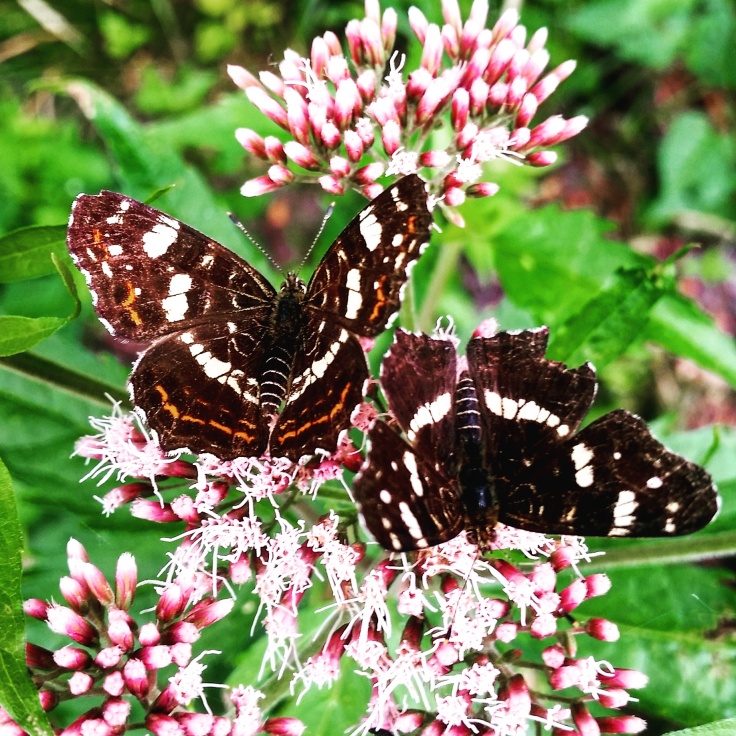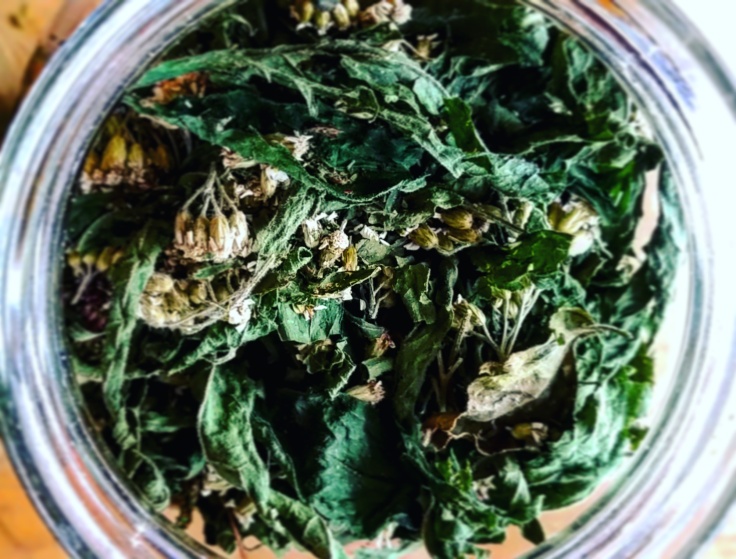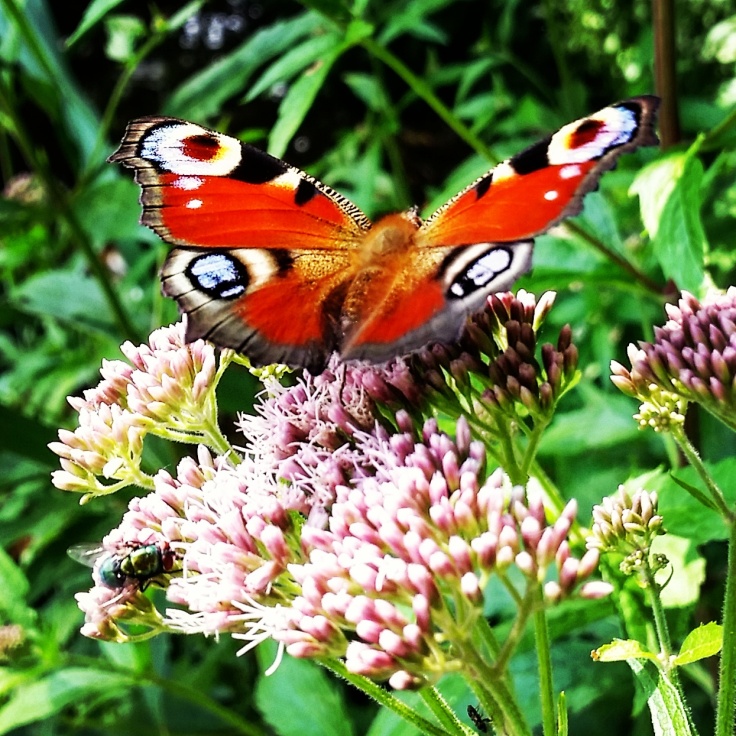Hemp Agrimony, or Holy Rope
Sadziec Konopiasty
Eupatorium cannabinum
Hemp Agrimony is a beautiful butterfly attracting plant. It grows in large clumps at the edge of lakes, slow streams, and damp meadows. It always makes me think of the most perfect, idyllic summer. Warm wind blowing, butterflies swirling in the air, a breeze on the water, time slowing down in the hot atmosphere like a fly in honey.
It’s called “Hemp” Agrimony because it’s leaves look like cannabis – just a little bit, if you squint your eyes. I wouldn’t have noticed if I hadn’t read about it. It’s also not in any way related to Agrimony.
This herb is definitely on my list of flowers to grow in my garden next year, and I’m going to try to collect seeds. It grows in large clumps and it is pretty enough to be considered “ornamental”. This is going to be year two of the garden when I stop throwing seeds around like a mad woman and actually make some sort of a plan.
The reason I pick Hemp Agrimony is that it is very useful during the early stages of flu. I use the leaves and flowers to make tea. It boosts the immune system and fights viral infections. It is one of my few times a year, emergency only teas, a bit like a normal cold medicine – I wouldn’t want to be drinking it every day! Because it is a potent medicinal plant it can do liver damage after prolonged use. It stimulates the kidneys and liver, helping to eliminate toxins from the body.
It can be used externally, in a bath, to relieve aching joints.

The leaves and flowering tops are alterative, cholagogue, depurative, diuretic, emetic, expectorant, febrifuge, purgative and tonic. The plant has a long history of use as a gentle laxative that does not provoke irritation, though excessive doses cause purging and vomiting. A tea made from the dried leaves will give prompt relief if taken at the onset of influenza. Recent research has shown that the plant might have anti-tumour activity, though the plant also contains pyrrolizidine alkaloids that can cause damage or cancer to the liver. The plant is harvested in the summer and dried for later use. The roots are diaphoretic, laxative and tonic. They are harvested in the autumn and dried for later use. Recently the plant has been found of use as an immune system stimulant, helping to maintain resistance to acute viral and other infections. A homeopathic remedy is made from the leaves. It is used in the treatment of influenza and feverish chills and also for disorders of the liver, spleen and gall bladder.


pyrrolizidine alkaloids – They are produced by plans as a means of defense against insect herbivores.
Essential oils found in Hemp Agrimony: germacrene D (≤22.0%), neryl acetate (≤20.0%), spathulenol (≤27.2%), and α-terpinene (11.5%). For the first time, α-zingiberene (≤7.8%) was found to be among three major constituents (as the second one) for hemp agrimony oils. SWV measurements revealed that oxidation potentials of compounds present in the oils are lower (below 0.1 V) compared with that of well-known antioxidant quercetin (0.15 V). Toxicity tests evaluated that hemp agrimony oils containing predominant amounts of germacrene D and neryl acetate were notably toxic (LC50 value 16.3–22.0 μg/mL).
germacrene D – Germacrenes are typically produced in a number of plant species for their antimicrobial and insecticidal properties, though they also play a role as insect pheromones. Two prominent molecules are germacrene A and germacrene D.
neryl acetate – Neryl acetate is a chemical compound found in citrus oils. Chemically, it is the acetate ester of nerol. In flavors and perfumery it is used to impart floral and fruity aromas.
spathulenol – A volatile oil that has an earthy scent.
A Terpinene – found in allspice. alpha-Terpinene is a constituent of many essential oils e. g. Citrus, Eucalyptus and Juniperus species Oil of Litsea ceylanica is a major source (20%). alpha-Terpinene is a flavouring agent. Alpha-terpinene has been shown to exhibit anti-fungal function
Web sources:
http://www.naturalmedicinalherbs.net/herbs/e/eupatorium-cannabinum=hemp-agrimony.php
http://www.pfaf.org/user/Plant.aspx?LatinName=eupatorium+cannabinum
http://www.tandfonline.com/doi/full/10.3109/13880209.2015.1078384?src=recsys&

Leave a comment